If you remember from our proposal post, our first question for this experiential research was:
- What were the smells, taste, and texture of medieval French dishes, and how do they differ from modern-day Western recipes?
To set the scene, imagine a crowded kitchen (which wouldn’t have been relatable for royalty but maybe for peasants with big families) slowly warming up with multiple boiling pots. You hear the grinding of spices and almonds, the sizzling of meat, loud conversation, and some background music. You smell the Cinnamon Brewet — the mixture of beef, cinnamon, and wine. After 3 hours of cooking (from 11am to 2pm), you finally sit at a marble table with each dish served separately on nice plates. Dig in!
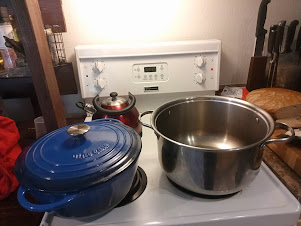
Our little set up!
Apple muse
| Flavor Nick = 6/10 Anjuli = 3/10 Audrey = 5/10 | Texture Nick = 1/10 Anjuli = 3/10 Audrey = 5/10 | Scent Nick = 7.5/10 Anjuli = 2/10 Audrey = 3/10 |
We all found that this dessert had a very strong taste of honey and licorice (we think this was due to the Rye bread). And the real kicker was that we couldn’t even taste the apples — we felt that all our hard work of peeling, cutting and boiling the apples had little reward! We didn’t see the point of eating it alone, and Nick thinks it would be better paired with some cheese. Also, the texture of the Apple muse was grainy with uneven clumps of bread — despite our efforts at grinding it by hand and by machine! Audrey didn’t dislike the texture all that much but would have preferred fewer bread crumbs to have more of a smooth puree. It smelled mostly of honey and wet bread — and we didn’t taste or smell the almond milk (not surprising after we tasted the milk by itself).
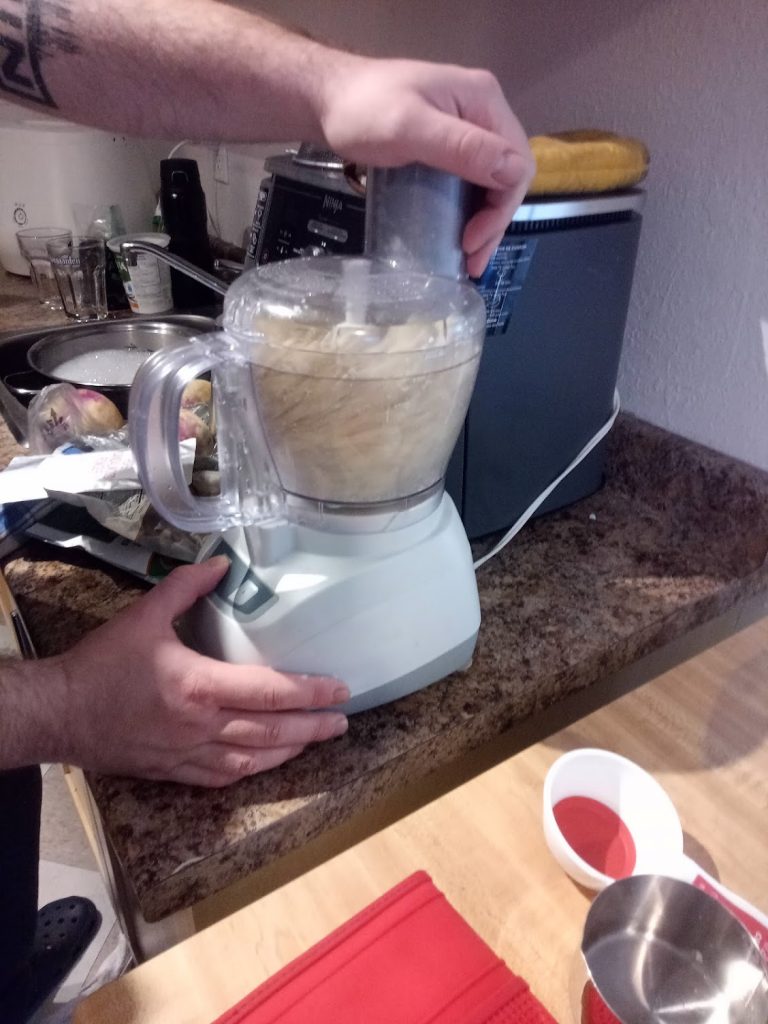
Thank God for the Industrial Revolution…
Turnips
| Flavor Nick = 6.5/10 Anjuli = 7/10 Audrey = 7/10 | Texture Nick = 8/10 Anjuli = 8/10 Audrey = 10/10 | Scent Nick = 8/10 Anjuli = 8/10 Audrey = 8/10 |
The turnips melted in our mouths after boiling them in beef stock and frying them in butter. Unfortunately, some of the pieces were very bitter and overpowered the taste of the butter and spices — this was likely a common occurrence for peasants without a garden. That being said, Anjuli discovered a new love for this vegetable and will try a second attempt at this recipe with a fresher selection of turnips.
Cinnamon Brewet
| Flavor Nick = 9/10 Anjuli = 7/10 Audrey = 9/10 | Texture Nick = 9/10 Anjuli = 8/10 Audrey = 9/10 | Scent Nick = 10/10 Anjuli = 10/10 Audrey = 10/10 |
The Cinnamon Brewet filled the kitchen with a wonderful mouth-watering scent of cinnamon… and the three-hour wait was so worthwhile! The meat was so soft and sweet (due to all the spices) and had a hint of wine. The almonds also added a nice crunch to every bite! That being said, we barely tasted the cinnamon — because of this, we believe that the recipe was modified to cater to modern cuisine since cinnamon is rarely used in our meals.
Almond Milk
| Flavor Nick = 2/10 Anjuli = 3/10 Audrey = 2/10 | Texture The milk as well strained and we didn’t have any stray almond in our cups | Scent The milk had no scent! |
The recipe that we used called the almond milk “quite a bit better than” the barley water (Greco & Rose, 2009), an observation that we wholeheartedly disagreed with. This was the most disappointing recipe!! It was so gross and lacked flavour — we could barely taste the almonds, and since there was no sweetener, it tasted like very, very, very diluted almond milk. The fact that the water (which can be argued not to have a taste) was the dominant flavour makes it so much worse! Audrey would describe it as dirty dishwater, and Nick also found that the almond milk coated his mouth.
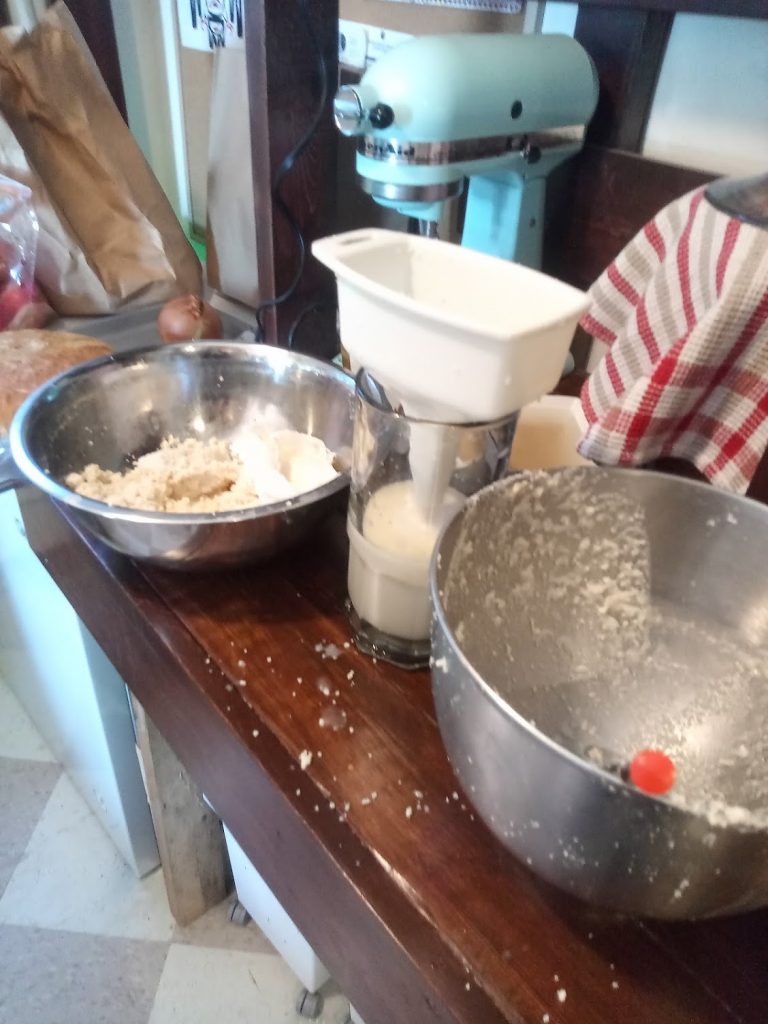
The scene of the crime
On top of that, the grinding of the almonds was very time-consuming and hard on the arm and hand. Because of this, we decided to use a food processor to speed up the process, but we were once again humbled when we had to strain the liquid from the almonds with a cheesecloth. So messy!!
Barley Water
| Flavor without lemon juice Nick = 8/10 Anjuli = 7/10 Audrey = 4/10 Flavor with lemon juice Nick = 8/10 Anjuli = 8/10 Audrey = 7/10 | Texture We chose to drink the water hot. | Scent Nick = 4/10 Anjuli = 6/10 Audrey = 3/10 |
We were all very surprised at how sweet the Barley water was! Audrey compared the taste with pasta water with a LOT of sugar (disgusting!), but Anjuli and Nick liked the flavour (hot nutty and sweet water) and could see why people drank the mixture as a tea. The recipe we followed recommended adding lemon juice for an extra kick, and wow, what a change! It tasted like lemonade (Audrey was instantly hooked), and it would have been refreshing in the summer.
As for the scent, the barley was stronger than the sugar, and Audrey was instantly reminded of the smell of dirty but wet dishes in a sink. The sugar added an extra layer of disgusting, but the lemon juice once again saved the day and subtly overpowered the other smells.
Poudre Douce
| Flavor Nick = 8/10 Anjuli = 7/10 Audrey = 10/10 | Texture The spices were well crushed and were homogenous with the sugar. | Scent Nick = 9/10 Anjuli = 9/10 Audrey = 10/10 |
While it was only a small component of the overall meal, we were very excited to try the Poudre Douce as it included spices that none of us had ever tasted before and ones that we would never have thought of putting in a savoury dish. The recipe we used is far from the only one, but we believe it turned out quite tasty, despite the subpar quality of our spice grinding. Medieval chefs definitively had far stronger forearms than we do!
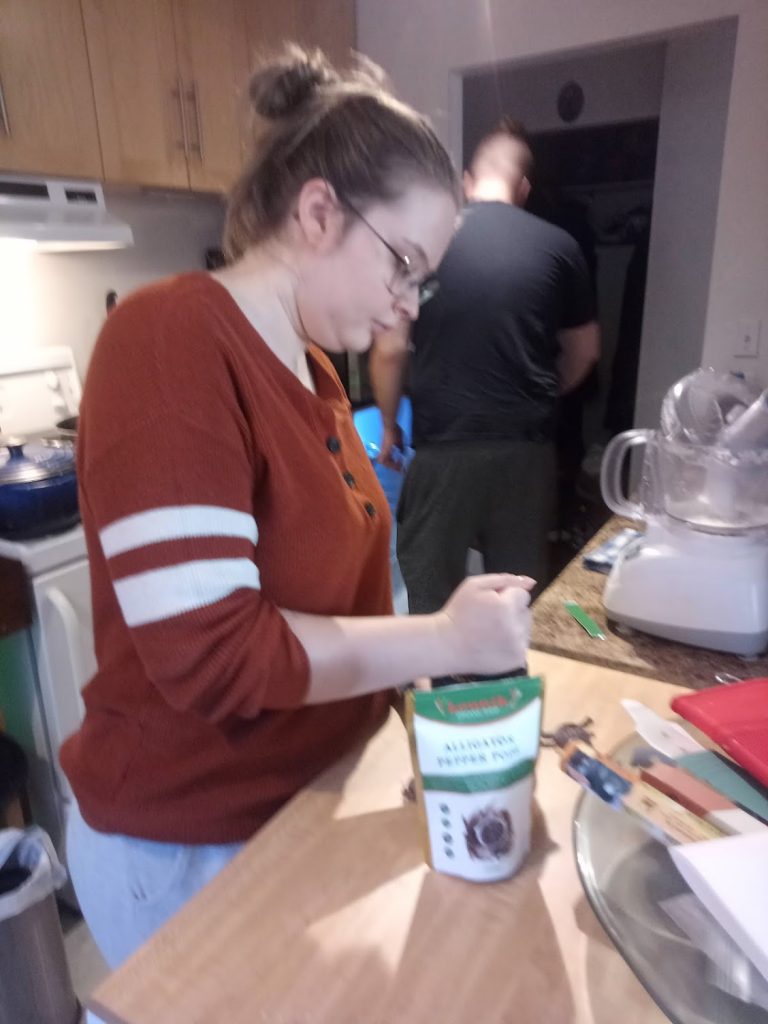
Anjuli’s workout of the day!
As you can see by our ratings, the Poudre douce was a hit! The spices smelled so nice and added a unique flavour profile to the turnips. The grains of paradise also had an interesting citrusy note, and the galingale was sweet/spicy but not as strong as the ginger. In our opinion, this mix could be used in other recipes like cookies, meats, other veggies… really anything, it was so good!
Rye Bread
| Flavor Nick = 7/10 Anjuli = 6/10 Audrey = 6/10 | Texture Nick = 7/10 Anjuli = 7/10 Audrey = 7/10 | Scent Nick = 7/10 Nick was the only one that got to smell the hot bread right out of the oven. Once it was cold, it had no distinct scent. |
Unfortunately, the bread featured in a previous blog turned out better than our final attempt — Nick thinks that it’s because the second dough was not wet enough. Despite being very dense, the bread was perfect for absorbing all the flavours of the Cinnamon Brewet!
We couldn’t identify any differences between this recipe and modern ones. Bread is bread – there’s not much to it! But we did notice that we were stuffed after one or two pieces, so we can see how the rye bread would have been perfect for a long day at work or to fill empty stomachs in times of scarcity.
Our Additional Thoughts:
The Poudre douce was also the only recipe we used that had written quantities for the ingredients. Most measurements were not standardized at this time because people did not have measuring equipment found in our modern kitchens. On top of this lack of standardization, recipes were often written in a manner that could be interpreted for both a single family and an entire banquet (Taillevent & Scully, 1988). Thus, the inclusion of quantities in all our recipes would have been unusual in the medieval period.
Vegetable recipes were not considered noteworthy in the medieval period, so they were not usually included in cookbooks. The turnip dish we made did not have a name, and the recipe focuses mainly on instructing how to harvest and prepare the vegetable itself rather than how to cook it. The recipe was included alongside instructions on salting ham or identifying good cheese, rather than with the other recipes (Greco & Rose, 2009).
While extremely underwhelming, the recipe for apple muse was interesting in its inclusion of multiple ingredients for food colouring. Many recipes of the time include saffron for food colouring, but this recipe also includes sandalwood to achieve its red colour. Unlike modern food colouring, these ingredients added taste to the food alongside colouring. For example, sandalwood powder is bitter and is rarely used in modern recipes due to its flavour. Including these ingredients stressed to us how vital the dish’s appearance was, maybe even taking priority over taste.
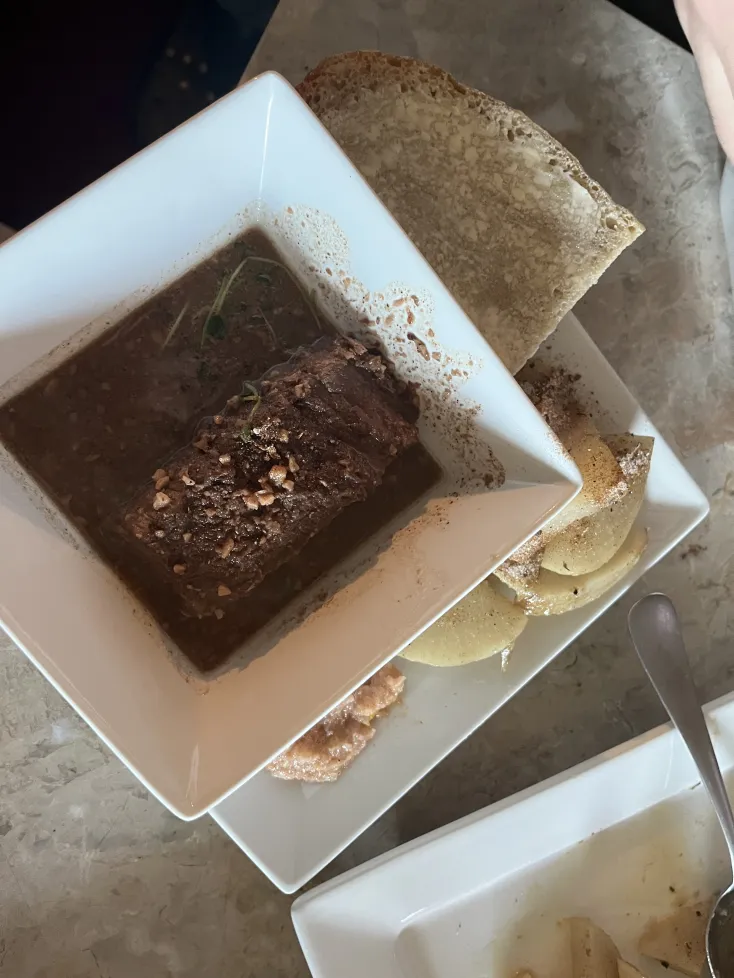
Yum yum yum
For our secound research question: How does it feel to finally sit down and taste our creations together?
After 3 hours of cooking, we were tired, hungry, and excited to finally taste our dishes! The order of courses were very different in medieval times than they are now. Unlike today, dessert/sweet dishes would not have been consumed separately from the savoury dishes (Greco & Rose, 2009). To imitate this, we served all of our dishes at the same time and ate them all together. But because the meal was so rich in protein, we were stuffed after a few bites! Eating made us sleepy and we were so thankful for Nick’s dishwasher — all the recipes asked for a lot of bowls, utensils, and pots.
References
Greco, G. L., & Rose, C. M. (2009). The Good Wife’s Guide (Le Ménagier de Paris): A Medieval Household Book. Cornell University Press.
Taillevent, & Scully, T. (Ed). (1988). The Viandier of Taillevent: An Edition of all Extant Manuscripts. University of Ottawa Press.

Your captions quite literally had me laughing as I was reading this. Great fun to follow along!